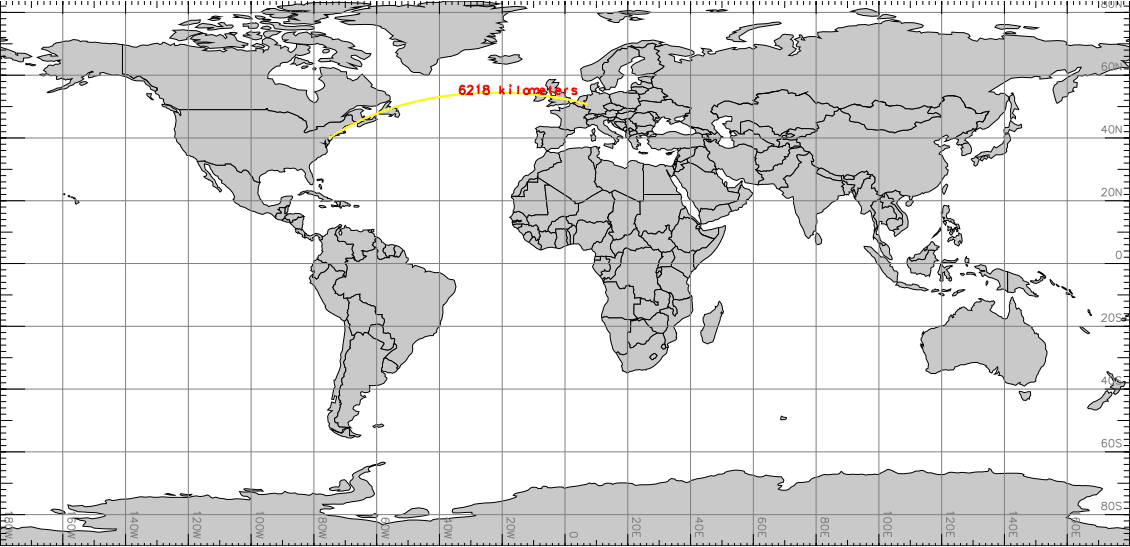
Visualization (with d.geodesic) of m.measure distance example
Bonn_DE="7.09549,50.73438" Philadelphia_US="-75.16379,39.95233" m.measure coordinates="$Bonn_DE,$Philadelphia_US" units=kilometers Length: 6217.916452 kilometers
As an example for the North Carolina sample dataset, here four points describing a square of 1000m side length:
m.measure units=meters \ coordinates=922000,2106000,923000,2106000,923000,2107000,922000,2107000 Length: 3000.000000 meters Area: 1000000.000000 square meters # script style output: m.measure -g units=hectares \ coordinates=922000,2106000,923000,2106000,923000,2107000,922000,2107000 units=meters,square meters length=3000.000000 area=1000000.000000
Last changed: $Date$